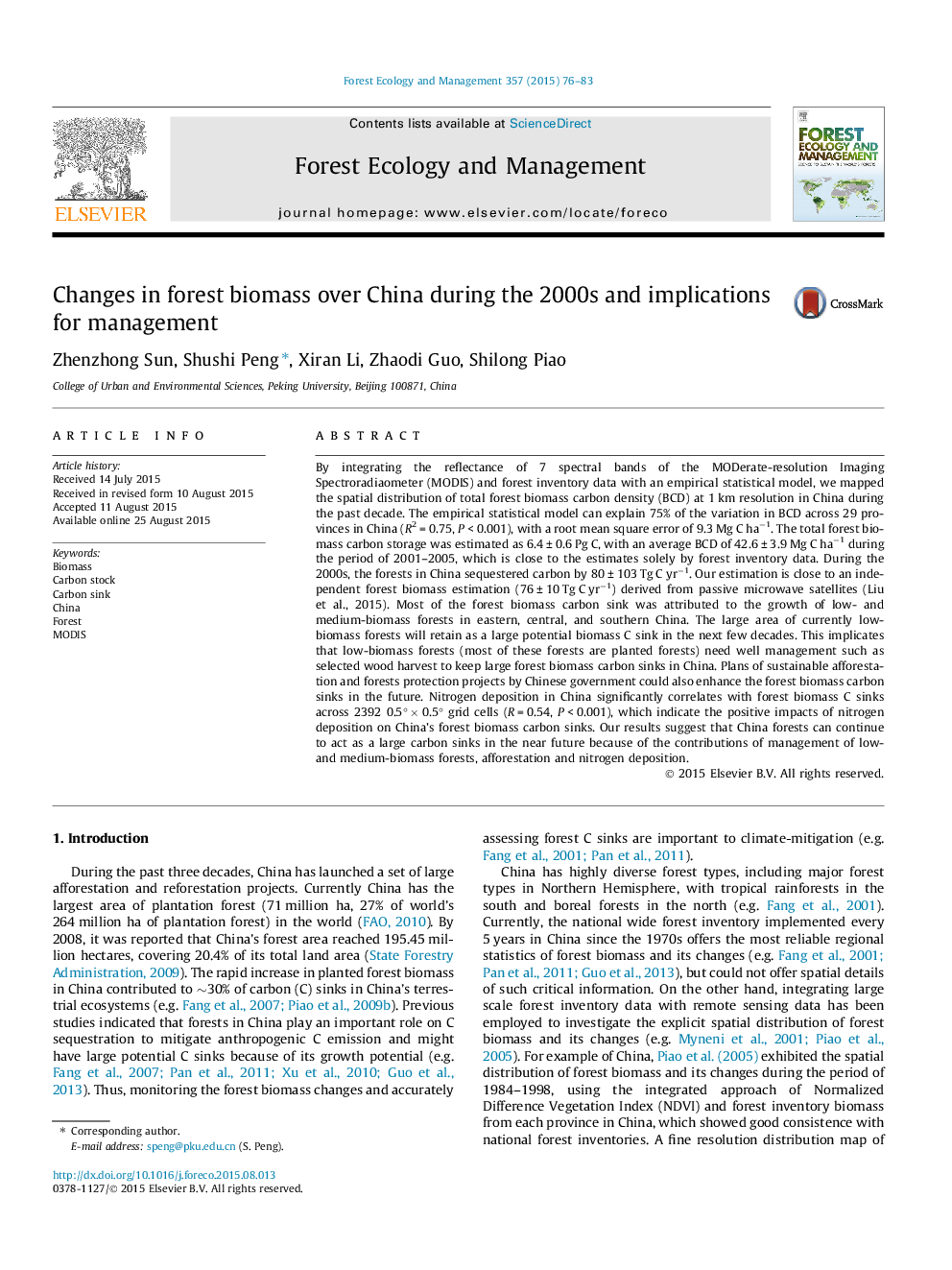| کد مقاله | کد نشریه | سال انتشار | مقاله انگلیسی | نسخه تمام متن |
|---|---|---|---|---|
| 6542696 | 159170 | 2015 | 8 صفحه PDF | دانلود رایگان |
عنوان انگلیسی مقاله ISI
Changes in forest biomass over China during the 2000s and implications for management
دانلود مقاله + سفارش ترجمه
دانلود مقاله ISI انگلیسی
رایگان برای ایرانیان
کلمات کلیدی
موضوعات مرتبط
علوم زیستی و بیوفناوری
علوم کشاورزی و بیولوژیک
بوم شناسی، تکامل، رفتار و سامانه شناسی
پیش نمایش صفحه اول مقاله

چکیده انگلیسی
By integrating the reflectance of 7 spectral bands of the MODerate-resolution Imaging Spectroradiaometer (MODIS) and forest inventory data with an empirical statistical model, we mapped the spatial distribution of total forest biomass carbon density (BCD) at 1 km resolution in China during the past decade. The empirical statistical model can explain 75% of the variation in BCD across 29 provinces in China (R2 = 0.75, P < 0.001), with a root mean square error of 9.3 Mg C haâ1. The total forest biomass carbon storage was estimated as 6.4 ± 0.6 Pg C, with an average BCD of 42.6 ± 3.9 Mg C haâ1 during the period of 2001-2005, which is close to the estimates solely by forest inventory data. During the 2000s, the forests in China sequestered carbon by 80 ± 103 Tg C yrâ1. Our estimation is close to an independent forest biomass estimation (76 ± 10 Tg C yrâ1) derived from passive microwave satellites (Liu et al., 2015). Most of the forest biomass carbon sink was attributed to the growth of low- and medium-biomass forests in eastern, central, and southern China. The large area of currently low-biomass forests will retain as a large potential biomass C sink in the next few decades. This implicates that low-biomass forests (most of these forests are planted forests) need well management such as selected wood harvest to keep large forest biomass carbon sinks in China. Plans of sustainable afforestation and forests protection projects by Chinese government could also enhance the forest biomass carbon sinks in the future. Nitrogen deposition in China significantly correlates with forest biomass C sinks across 2392 0.5° Ã 0.5° grid cells (R = 0.54, P < 0.001), which indicate the positive impacts of nitrogen deposition on China's forest biomass carbon sinks. Our results suggest that China forests can continue to act as a large carbon sinks in the near future because of the contributions of management of low- and medium-biomass forests, afforestation and nitrogen deposition.
ناشر
Database: Elsevier - ScienceDirect (ساینس دایرکت)
Journal: Forest Ecology and Management - Volume 357, 1 December 2015, Pages 76-83
Journal: Forest Ecology and Management - Volume 357, 1 December 2015, Pages 76-83
نویسندگان
Zhenzhong Sun, Shushi Peng, Xiran Li, Zhaodi Guo, Shilong Piao,